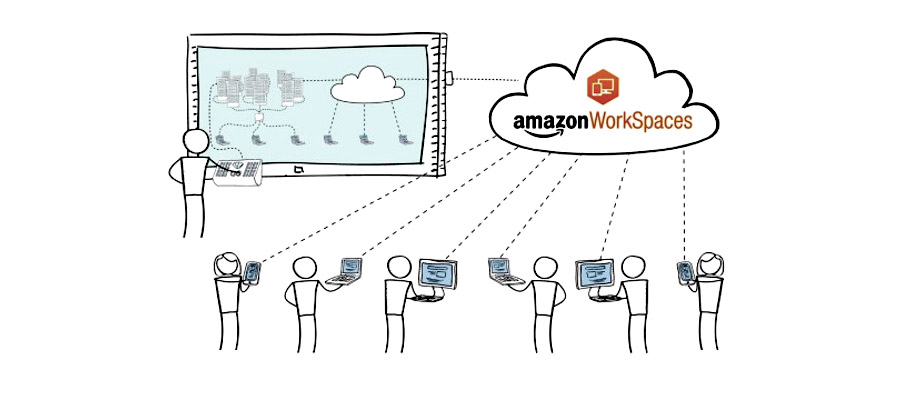
Amazon Workspaces in action
Amazon Workspaces reinvents the thin client
With its WorkSpaces product, Amazon now offers a managed desktop computing service in the cloud.
Instead of purchasing and managing expensive on-site desktops, system administrators can provision desktop experiences for any number of users at the click of a button.
"But they all still need a computer, right?" I hear you cry, "so what's the advantage?" Well in theory, users get a better experience than a traditional desktop with more functionality - like the ability to access their applications and data from a device of their choice. Web designers can spark-up machines for Photoshop/Illustrator work, whilst the development team uses machines tailored for programming IDE's. And system administrators get a simpler & cheaper way to provision all these staff desktops.
Amazon's new service now partners with a new type of low-power, low-cost instance that can provide power in short bursts. Based on the premise that most computers site idle much of the time, a small T2 instance gets 20% of a single-core 2.5GHz Intel Xeon's processing time. And as it idles, the instance builds up "CPU Credits" which can be traded-in for more power when a bit of data-crunching's required.
OK that performance isn't going to break any records. But operating requirements can be monitored & scaled by sysadmins and - crucially - this type of environment might cost just €7/month. PER MONTH! At that price, millions of word-processors around the world might well see the benefits.
Of course the thin-client approach has been around for decades and Citrix, for example, has a lot more experience in this space. But with its sheer processing power and distribution reach, Amazon could bring a whole new price-point to the market. And that's not the only sector under threat: there can be little doubt Michael Dell is paying very close attention to developments.
So will they revolutionize your working environment in the near future? These things don't change overnight, but with the potential to compliment new DevOps development methodologies, the migration of our entire industry to cloud-based services looks set to continue apace.